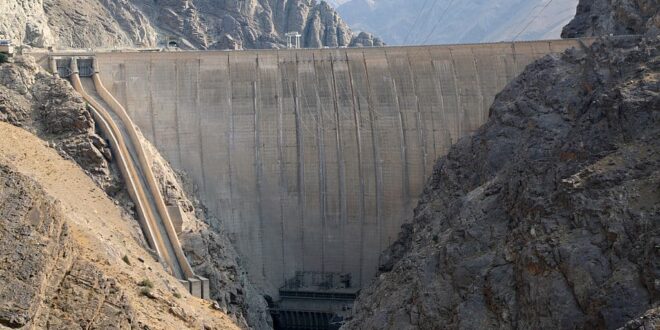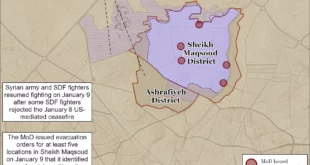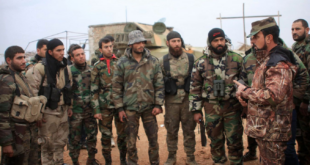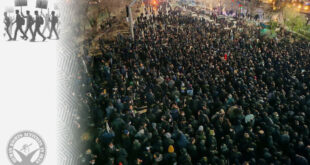Blackouts and dry water taps are nothing new for Iranians, but this year the country’s infrastructure problems have become a true crisis, one that is gripping 90 million people at once. Water scarcity, extreme heat and power outages further weaken an already strained economy, in a population so disillusioned with the regime that some openly praised Israel’s airstrikes in mid-June against nuclear sites within the regime.
The likelihood of nationwide unrest is sharply rising, potentially posing a greater threat to clerical rule than attacks on Iran’s nuclear program. U.S. President Donald Trump has launched a “maximum pressure” campaign against the regime, yet so far, that campaign has not focused on amplifying the Iranians’ own efforts to oust the dictatorship. That should change. With a policy of maximum support for the Iranian people, the United States can help them decide their country’s future as they grapple with the ongoing energy and environmental crisis.
How bad is the crisis? The government now posts schedules for blackouts in some neighborhoods with two daily outages lasting two hours each, three days a week. In reality, the cuts hit without warning and leave people scrambling. Social media is overflowing with videos showing food rotting in dead refrigerators, parents trying to comfort crying children in stifling heat, shopkeepers stuck in dark stores and factories slashing production.
Blackouts may seem absurd in a nation that sits on the second-largest natural-gas reserves in the world and gets some of the strongest sunlight on Earth. But the electrical grid is old, the plants are inefficient, and fuel supplies are a constant headache. Experts inside the country say it would take $30 billion and three to four, or more, years to modernize the system. Solar farms could be built in a year, but for a regime that’s already broke, neither option is on the table. Instead, they’ve gone for the cheapest “fix”—mass blackouts that shift the pain onto the public.
More than 40 cities face routine water rationing, with at least 19 provinces under severe water stress. Iran records more than 1,700 heat-related deaths each year, nearly five times the regional average. In late July, protests erupted in industrial and agricultural hubs where power and water cuts directly threaten livelihoods. Demonstrators and regime outlets hold government institutions responsible, citing policies that enrich elites at the expense of the environment, including politically driven dam projects that lack proper environmental reviews or long-term planning.
This convergence of crises is also exacting a heavy economic toll in the country. Repeated power cuts have crippled auto manufacturing, with many companies temporarily shutting down or laying off hundreds of workers. Outages have halted operations at refineries, threatening supplies of gasoline, motor oil and other petroleum products. Industrial power is now cut three days a week, with smaller factories unable to afford generators. The government itself admits the industrial sector is losing $100 million every day. It’s a grim, avoidable collapse.
Tehran typically blames Western sanctions for economic distress, but even regime-aligned outlets, from those tied to the supreme leader Ali Khamenei to the so-called “reformist” camp, are blaming government mismanagement as the chief cause of the crisis. The incompetence and corruption are simply too apparent, from failing to store gas for power plants to maintaining wasteful subsidies instead of reforming the regulatory system that has left the grid and aquifers in collapse.
Unsurprisingly, the Islamic Republic’s priorities are at odds with those of its population. Humiliated by setbacks suffered during the war with Israel and more isolated than ever, the regime refuses to abandon its nuclear weaponization ambitions, halt missile development or cut funding to militias. Instead, it’s preparing for the next conflict with Israel. As one member of parliament’s National Security Commission bragged, “Despite the water and electricity problems, we are ready to enter another war.”
Protests are sporadic, not from lack of outrage, but because of the regime’s brutal crackdowns. Executions of political prisoners have surged since the war, with about 70 now on death row. And authorities claim to have arrested 21,000 people during the conflict with Israel. Yet even without street protests, these quality of life and economic issues fuel political unrest in Iran, as happened in 2017 and 2019.
With all these crises coming together and with a reimposition of massive sanctions looming, even regime officials concede the Islamic Republic faces an existential threat. The question is not whether there will be new waves of unrest filling Iran’s streets, but when.
As new upheaval inevitably takes shape, Washington should pursue a strategy in alignment with the domestic protesters, offering diplomatic support for dissidents and giving people unimpeded Internet access supplemented by an amplified communications campaign. This is not to dictate outcomes but to ensure Iranians themselves chart the course of change.
 Eurasia Press & News
Eurasia Press & News



